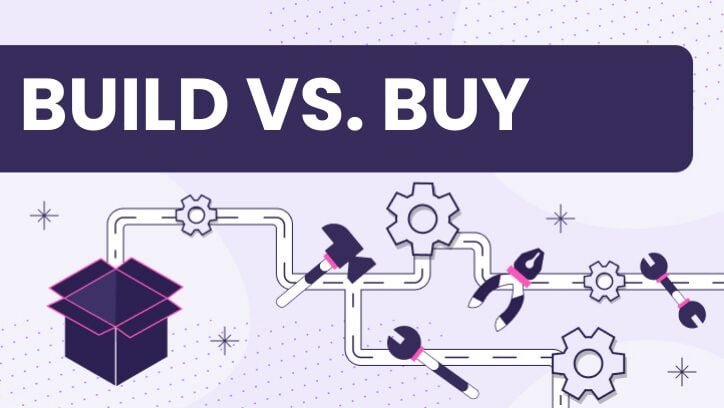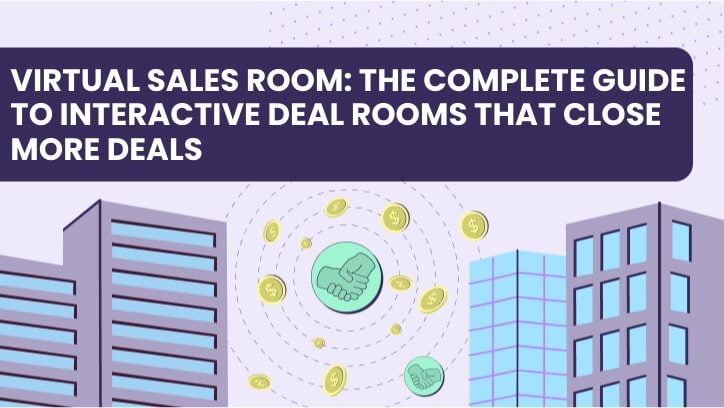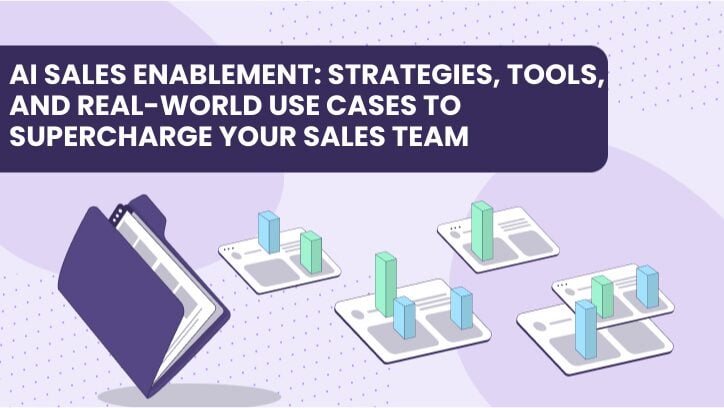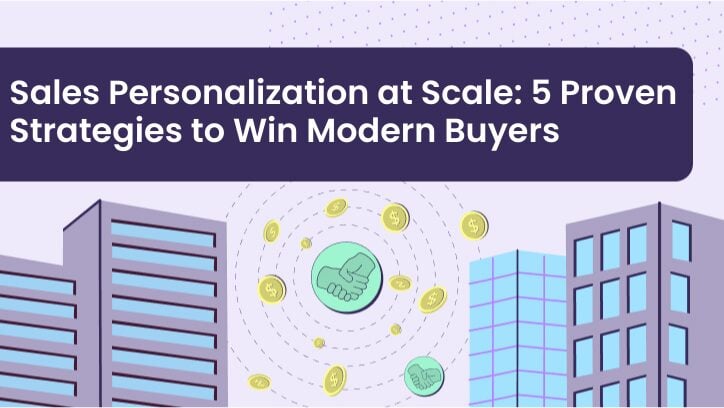Build vs. Buy in the Age of AI: Why Smart Companies Choose to Purchase Non-Core Software
The advent of artificial intelligence has fundamentally transformed the software development landscape, democratizing the ability to build sophisticated applications and tools. One report shows that 66% of companies investing in AI before the end of 2024 expect AI to have a positive impact on their company, fueling unprecedented demand for software solutions.
Where once complex software solutions required large teams and months of development, AI-powered tools now enable rapid prototyping, code generation, and automated testing. However, this technological democratization has also created a paradox: just because you can build something doesn’t mean you should.
Is it Better to Build or Buy?
As one CIO put it in a recent article in CIO.com: “What I’ve learned is that the answer is rarely black and white — it’s about making strategic choices based on your specific business context.” While this is especially true for enterprise solutions, companies from SMB to enterprise are wrestling with this question.
While AI has made building more accessible, the strategic imperative has shifted toward focusing internal development resources where they create the most value. In 2024, 75% of rapidly growing companies are planning to spend on software in comparison to 2023, which is more than 60% of growth on average—but the smartest companies are increasingly selective about what they build versus what they buy.
The democratization of software building through AI has created a critical strategic inflection point. For many companies, the question is not just technical—it’s about optimizing the entire business process to maximize speed and value. Companies that previously relied heavily on third-party solutions now face the temptation to build everything in-house. However, the most successful organizations are discovering that the real competitive advantage lies not in building more software, but in building the right software while purchasing best-in-class solutions for everything else.
Build vs Buy in the Age of AI: The Data-Driven Case for Strategic Purchasing
The decision between building and buying software solutions has reached a pivotal moment, with compelling data showing that strategic purchasing delivers measurable competitive advantages. While data privacy and security concerns—illustrated by high-profile incidents like the Samsung data breach—remain important considerations, the mathematics of modern software development increasingly favor purchasing non-core solutions.
The numbers tell a compelling story: according to PwC’s 2024 Global Investor Survey, 66% of investors expect companies to deliver productivity increases from AI over the next 12 months, while EY research shows that 97% of senior business leaders whose organization is investing in AI report positive ROI from their AI investments. However, the most successful companies have learned to be strategic about what they build versus what they buy.
Consider the stark economics: when suitable solutions exist, choosing to buy software can reduce time-to-market by 70% or more. For interactive demo software—a category that has seen explosive growth—industry research consistently shows that companies using purpose-built demo platforms achieve significantly higher conversion rates and shorter sales cycles compared to traditional presentation methods.
The decision process should focus on identifying what makes your product uniquely valuable to customers. For most companies, interactive demo capabilities don’t provide a defendable competitive edge—they’re a sales enablement tool, not a core differentiator. Companies like Walnut understand this distinction, providing specialized demo software that enables businesses to clearly communicate their value proposition without diverting engineering resources from core product development.
Technical Debt: The Hidden Cost That Makes Buying Essential
Technical debt represents one of the most underestimated factors in build vs. buy decisions, with far-reaching implications that extend decades beyond initial development. Every custom piece of code embeds not only technical maintenance but also hidden business logic that must be updated whenever regulations, customer requirements, or integrations shift. Every custom piece of code becomes a long-term commitment requiring continuous maintenance, security updates, and compatibility adjustments as technology ecosystems evolve.
The financial impact is substantial and measurable. Research consistently shows that maintaining custom software consumes 60-80% of IT budgets, with the remainder available for new initiatives. What appears as a straightforward build decision today can evolve into a significant resource drain as underlying technologies shift, security standards tighten, and integration requirements multiply.
Companies often discover that their “quick” internal demo solution requires ongoing updates, security patches, and compatibility maintenance that diverts engineering attention from core product development. When you purchase specialized software like interactive demo platforms, vendors assume responsibility for staying current with security standards, browser compatibility, integration requirements, and feature enhancements.
For non-core functions like sales demos, this technical debt transfer becomes particularly valuable. Interactive demo tools have been shown to dramatically improve conversion rates and reduce sales cycles, but achieving these results requires ongoing optimization, A/B testing capabilities, analytics integration, and performance monitoring. All of these maintenance burdens disappear when you buy rather than build, while still delivering measurable business impact.
Speed to Market: Why Buying Wins the Race
Generative AI may accelerate code creation, but even AI-generated prototypes require ongoing maintenance, integration, and security oversight—challenges that disappear when you purchase a proven platform. The velocity imperative in modern business cannot be overstated—being six months late to market can result in losing an entire market opportunity as competitors capture user attention and establish market dominance. The data overwhelmingly supports purchasing over building when speed matters.
According to industry research, low-code platforms reduce application development time by 90% compared to traditional custom development. For specialized functions like interactive demos, the speed advantage is even more dramatic. Companies implementing purpose-built demo software can go from concept to fully functional sales demos in days rather than months.
The mathematics are compelling: the right buy decision can reduce time-to-market by 70% or more, allowing organizations to capitalize on opportunities while they exist. Industry studies consistently show that interactive demo platforms deliver immediate impact, with companies seeing substantially higher conversion rates and faster deal progression compared to traditional presentation approaches.
Consider the opportunity cost: while your engineering team spends months building a custom demo solution, competitors using platforms like Walnut are already demonstrating their software’s value to prospects, creating compelling product experiences that accelerate sales cycles. This time advantage compounds across your entire sales organization, creating a significant competitive benefit that extends far beyond the initial implementation speed.
The speed advantage extends beyond initial deployment. When market conditions change or new features need demonstration, purchased solutions adapt rapidly through vendor updates rather than requiring internal development sprints that divert resources from core product innovation.
Engineering Talent: The $200K+ Question
The economics of engineering talent have fundamentally shifted, with the average fully-loaded cost of a senior engineer now exceeding $200k annually. This figure encompasses salary, benefits, equipment, management overhead, and most importantly, the opportunity cost of their time spent on non-core development.
With qualified developers commanding premium salaries and lengthy hiring processes, every hour of engineering time becomes precious. When talented engineers spend time building demo software, presentation tools, or other sales enablement functionality, they’re not available to work on the core product features that drive competitive differentiation and customer value.
The math is straightforward: if building a custom demo solution requires 200 hours of senior engineering time at $150/hour fully loaded cost, that’s $30,000 in direct costs—before considering ongoing maintenance. Interactive demo platforms typically cost a fraction of this amount annually while providing professional-grade functionality that would require significantly more development time to match.
Strategic resource allocation becomes critical when engineering talent is both expensive and scarce. The most successful product teams focus their internal development efforts exclusively on core business functionality that creates defendable competitive advantages. For everything else—from demo software to analytics dashboards to integration tools—they leverage best-in-class purchased solutions.
This approach allows companies to punch above their weight, achieving enterprise-grade capabilities across all business functions while maintaining lean engineering teams focused on their unique value proposition. Companies like Walnut understand this dynamic, providing specialized demo capabilities that would require months of engineering effort to build internally, allowing their customers’ engineering teams to focus entirely on product innovation.
The Rise of Specialized Solutions
The software market has evolved to offer increasingly specialized solutions that allow businesses to tailor applications to their specific needs, often providing a better fit than generic off-the-shelf solutions. These specialized tools have emerged in response to the limitations of one-size-fits-all approaches, offering industry-specific functionality, compliance features, and integration capabilities. This specialization trend offers potential cost savings as the need for specialized developers is minimized.
Rather than hiring experts in every domain your software touches, you can leverage the expertise already built into specialized solutions by vendors who focus exclusively on those areas. Just as companies rarely build their own customer relationship management (CRM) systems today, most should avoid building non-core tools like demo platforms when specialized, enterprise-ready options exist.
Customized software projects can still be advantageous for businesses seeking differentiation from competitors through truly unique solutions. However, the growth of user programming tools and no-code/low-code platforms is projected to facilitate the development of specialized software even by non-technical individuals, further blurring the traditional build vs. buy boundaries.
Partnering with development companies or specialized vendors can provide the expertise and cost-effectiveness necessary for building or customizing specialized software without the overhead of maintaining that expertise in-house.
Why Build vs. Buy Matters More Than Ever
The stakes for build vs. buy decisions have increased significantly due to the evolving landscape of specialized solutions, costly engineering talent, and accelerated market dynamics. The consequences of making the wrong choice have amplified as technology cycles have shortened and competitive advantages have become more fleeting.
Ten years ago, companies were often required to build document automation solutions from scratch, whereas now sophisticated options are available to purchase and can be implemented quickly with minimal customization. This transformation illustrates how the market has matured, offering more viable buy options across a broader range of business functions.
The decision between building or buying is increasingly influenced by the scarcity and high cost of engineering talent, making it crucial to allocate these resources strategically. However, the traditional build vs. buy debate is often an oversimplification, as customization is frequently required even when buying software, especially in large enterprises with complex, unique requirements.
An informed build vs. buy decision should derive from a structured framework, considering each step from discovery to final recommendation, rather than relying on intuition or past practices that may no longer apply in the current technological landscape.
Critical Risk Assessment: If Downtime Occurs, What Is Our Exposure?
Understanding your risk exposure from potential downtime is crucial when evaluating build vs. buy options. When evaluating exposure to downtime, organizations must also account for the business rules that govern how systems handle exceptions, escalation, and failover. The exposure and risk associated with system failures depend heavily on the system’s criticality to ongoing operations and its role in driving revenue or customer engagement.
Performance bottlenecks that lead to downtime can occur at various stages—connection speed, network performance, database responsiveness, or application-level issues—and must be thoroughly assessed during the decision-making process. When you build, you own all these potential failure points. When you buy, you’re dependent on the vendor’s infrastructure and expertise.
The ability to test, measure, and assure performance becomes crucial in mitigating exposure and risks linked to downtime. This includes understanding not just normal operating conditions, but also peak load scenarios, failure recovery procedures, and escalation processes.
Understanding potential points of system failure allows for targeted investments in redundancy and reliability to minimize downtime impacts. Preparing for downtime involves evaluating both hardware and software capabilities to ensure robust systems that can withstand performance challenges and business continuity requirements.
The Need for Speed in Competitive Markets
Market timing has become increasingly unforgiving, with delayed entry often resulting in permanent competitive disadvantage. Being six months late in today’s market can result in losing an entire market opportunity, as digital markets tend to favor first movers and network effects can quickly establish dominant positions.
Choosing the right buy decision can reduce time-to-market by 70% or more, providing crucial competitive advantage in fast-moving markets. In competitive environments, quick time-to-market is essential for maintaining revenue growth and customer loyalty, as alternatives proliferate rapidly.
The build vs. buy decision often arises under intense pressure to quickly deploy effective solutions that can capture market opportunities before they disappear. Gartner’s Pace-Layered Application Strategy suggests categorizing software based on its rate of change to better streamline and expedite decision-making processes.
Rapid technological changes increase the maintenance burden of custom software, potentially slowing down market responsiveness over time. Speed to market becomes a key consideration in the build vs. buy framework, where non-core functionalities become prime candidates for purchasing rather than building.
Generative AI offers new ways to accelerate both content and software code creation, acting as a virtual developer that can potentially speed up development processes. However, this acceleration applies more to building than buying, adding another variable to the decision matrix.
Critical FAQ’s to Examine During A Build vs. Buy Examination
- How much design flexibility and control are needed?
- How will ongoing support be handled?
- Who will train the support team?
- What is my margin of error?
- What is the level of integration needed:
The Must-Haves, Should-Haves, Could-Haves, and Won’t-Haves: A Framework for Smart Purchasing
The ultimate build vs. buy decision requires a systematic framework that distinguishes between core competencies that drive competitive advantage and supporting functions that enable business success without differentiating your offering.
Must-Haves: Core Product Functions These are the features and capabilities that make your product uniquely valuable to customers. If you’re building software that analyzes customer behavior, your analytics engine is a must-have that should be built internally. These functions directly impact your competitive positioning and customer value proposition.
Should-Haves: Strategic Supporting Functions
These capabilities significantly impact business success but don’t differentiate your core offering. Customer support systems, billing platforms, and user authentication might fall into this category. The decision depends on whether customization provides strategic advantage or commodity functionality suffices.
Could-Haves: Sales and Marketing Enablement Functions like interactive demos, presentation software, lead scoring systems, and sales analytics typically fall into this category. While important for business success, they rarely provide defendable competitive advantages. Interactive demo software exemplifies this perfectly—the ability to create compelling product demonstrations is crucial for sales success, but building custom demo software doesn’t differentiate your core product.
Won’t-Haves: Commodity Functions Basic functions like email delivery, file storage, payment processing, and standard integrations should virtually always be purchased. These are solved problems with mature, cost-effective solutions available.
The framework clarifies why companies like Walnut have found success in the interactive demo space. Sales demonstrations are universally needed but rarely provide competitive differentiation. What matters is how effectively you can communicate your product’s value to prospects, not whether you built the demo software yourself.
Data privacy and security considerations remain important, especially for must-have and should-have functions, but the choice between off-the-shelf solutions and custom development increasingly favors purchasing for could-have and won’t-have categories. Modern demo platforms provide enterprise-grade security while enabling sales teams to create compelling, interactive experiences that clearly communicate product value—exactly what companies need to succeed without the technical debt and resource allocation challenges of building custom solutions.
Ready to stop wasting precious engineering cycles on non-core software and start winning deals faster?
Walnut gives your team personalized, interactive demos that accelerate sales cycles, eliminate technical debt, and deliver measurable ROI—without pulling engineers off your core product.





